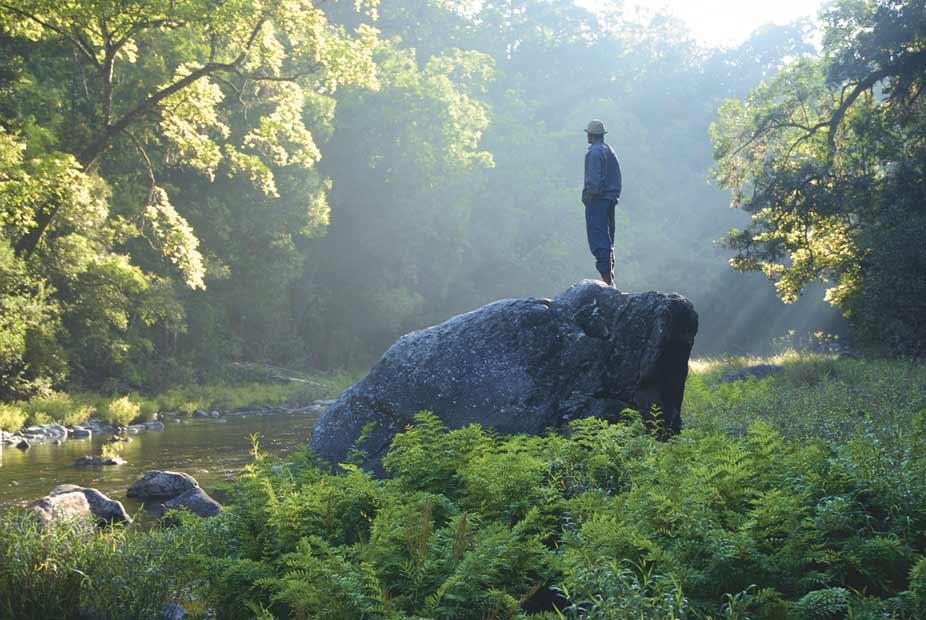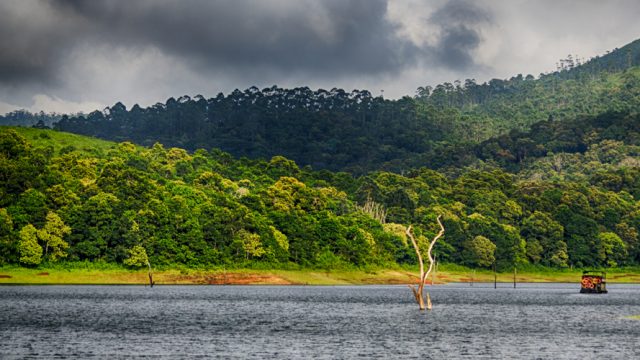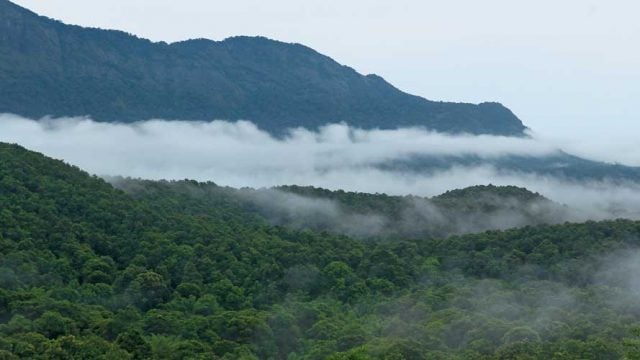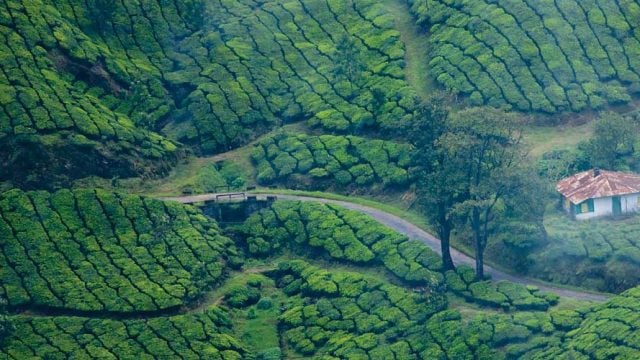The Silent Valley National Park spreads across 89 sq. km in Kerala’s Palakkad district. The park, which
Today, the core area of the Silent Valley National Park is closed to tourists, and there is no habitation within the park. So it was a rare privilege to be allowed to trek through the Silent Valley, and across the border to the Mukkurthi National Park in Tamil Nadu.
A 24km jeepable road through the Attapadi reserve forest took us from Mukkali to Sairanthri. It’s always more fun to walk though, and it’s easier to explore the forests en route that way. At Sairanthri, we entered Silent Valley. From here it was a 3km walk down to the dam site on the Kunthi; the metal suspension bridge on the river marks the point till where tourists are allowed.
This is where the real trek started. The 8km to Poochappara, the conical mountain seen from Sairanthri, took us through dense evergreen forests. Poochappara translates as ‘cat rock’ — from a distance the mountain apparently appears like a squatting cat. After crossing the river at the dam site, we passed through a small grassland patch — the habitat of the Malabar Daffodil (Ipsea malabarica), a beautiful orchid thought to be extinct till it was rediscovered in the Silent Valley. On the rocky slopes along the river we found the bamboo orchid, another beautiful orchid of South Indian forests.
The 16km trail from Poochappara to Valakkad goes along a mountain ridge, descends into a valley and then after crossing the river, takes one through thick reed and evergreen forest. Other lucky people who manage to come this far may bump into a herd of elephants and the beautiful lion-tailed macaque, the flagship species of Silent Valley.
On the third day, a steep climb of 8km brought us to Sisspara, at a height of more than 1,800m. The forests had changed from evergreen to montane shola. The trees here were stunted with crooked branches, and thick with epiphytes. Extensive grasslands stretching along the hills and valleys were interspersed with patches of shola forest. Sisspara is the entry point to the Nilgiris. From the Sisspara gap, we could see an endless valley extending into the horizon.
Further on, the path moved along streams that meandered through forests of Rhododendron arboreum, the only rhododendron species in the South Indian hills. From Sisspara, it was another 12km trek to Bangitapal. We started early in the morning from Valakkad so as to reach Bangitapal, before the thick mists blanketed the mountains. From Bangitapal to Upper Bhavani was another 12km, after which we were back on a road again.
The information
Most of the Silent Valley National Park is closed to tourists. You can, however, trek the 23km trail from Mukkali to Sairanthri and a further 3km to the dam site. You will have to return to Mukkali the same day. There is a forest rest house at Mukkali. For permissions, and reservations at the forest rest house, contact the Wildlife Warden at 04924-222056 or [email protected]
trekking through Silent Valley
Leave a Reply
You must be logged in to post a comment.





